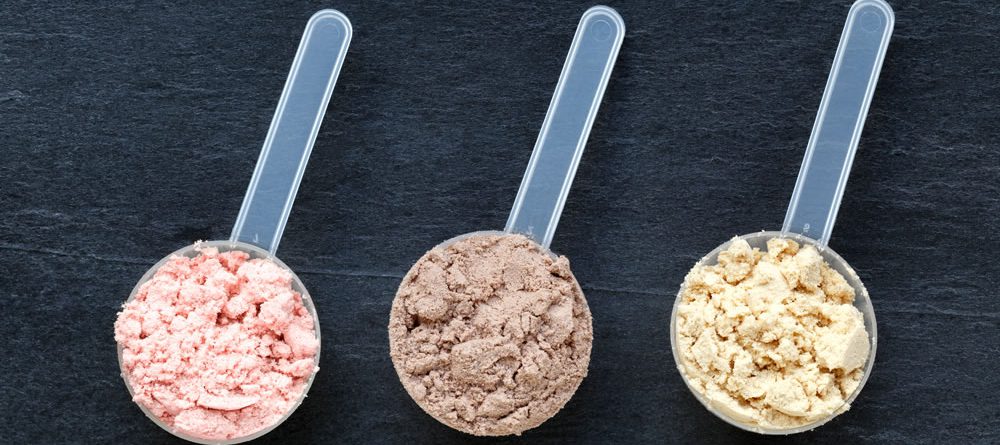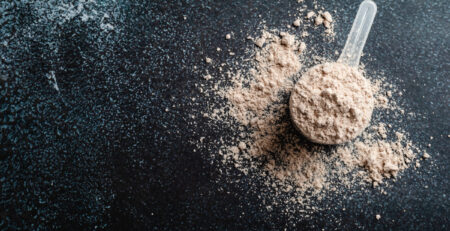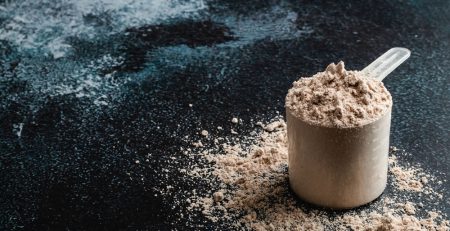Way too Many Types of Whey Protein
Types of Whey Protein
For decades, whey was considered a waste product and discarded into rivers and lakes. Over the years its fortune has increased and is now considered a valuable supplement. Technological advancements have improved quality and introduced many variations. There are three main forms of whey protein: concentrate, isolate, and hydrolysate (or hydrolyzed whey).
[php_everywhere]
Whey Concentrate vs Isolate vs Hydrolysate
Whey protein is a byproduct of cheese production. Milk is made up of two proteins: whey and casein. To make cheese, the proteins are separated. The protein powder we take after a workout starts its journey as a thin, watery liquid. This liquid is processed, and eventually turns into the powder we all love. The amount of processing dictates its final form1.
Whey Concentrate
After whey is separated from milk, it’s processed further and becomes whey concentrate. Concentrate is made up of 29% to 89% protein1. Whey concentrate does not go through rigorous filtration and contains some fat, carbohydrates (mainly lactose), and other nutrients2,3.
Whey Isolate
Whey concentrate can be further refined and turned into an isolate. Whey isolate is made up of more than 90% protein. It’s much lower in fat, carbohydrates, and other nutrients than concentrate2,3.
Whey Hydrolysate (Hydrolyzed Whey)
All proteins are a chain of individual amino acids linked together. The amount, type, and order of the amino acids in a protein dictate how it behaves in the body. When you consume a protein, the body breaks it down into its individual amino acids. Whey hydrolysate is a partially broken down protein. This is accomplished by either adding heat or enzymes to break the protein into smaller pieces.
Kilodaltons (kDa) are the unit used to measure the molecular weight of proteins. Hydrolyzed whey has a molecular weight of less than 1 kDa while a typical whey protein has a molecular weight of 26.6 kDa. Hydrolyzed proteins are much smaller than whole ones4. There is some research indicating hydrolyzed proteins are absorbed faster than intact proteins3,5. This may lead to a more efficient workout recovery.
The Bottom Line
Now that we have a basic understanding of the three types of whey protein, we can begin to look at whether or not there are benefits of using one over the others. We’ll look at what the research says in the next article of this series: What type of whey protein works best: concentrate, isolate, or hydrolysate?
References
- Deeth, H., & Bansal, N. (2019). Whey proteins: from milk to medicine. London: Academic Press. doi: 10.1016/B978-0-12-812124-5.00002-3
- Patel, S. (2015). Emerging trends in nutraceutical applications of whey protein and its derivatives. Journal of Food Science and Technology, 52(11), 6847–6858. doi: 10.1007/s13197-015-1894-0
- Lockwood, C. M., Roberts, M. D., Dalbo, V. J., Smith-Ryan, A. E., Kendall, K. L., Moon, J. R., & Stout, J. R. (2016). Effects of Hydrolyzed Whey versus Other Whey Protein Supplements on the Physiological Response to 8 Weeks of Resistance Exercise in College-Aged Males. Journal of the American College of Nutrition, 36(1), 16–27. doi: 10.1080/07315724.2016.1140094
- Bassan, J. C., Goulart, A. J., Nasser, A. L. M., Bezerra, T. M. S., Garrido, S. S., Rustiguel, C. B., … Monti, R. (2015). Buffalo Cheese Whey Proteins, Identification of a 24 kDa Protein and Characterization of Their Hydrolysates: In Vitro Gastrointestinal Digestion. Plos One, 10(10). doi: 10.1371/journal.pone.0139550
- Manninen, A. H. (2009). Protein hydrolysates in sports nutrition. Nutrition & Metabolism, 6(1), 38. doi: 10.1186/1743-7075-6-38












